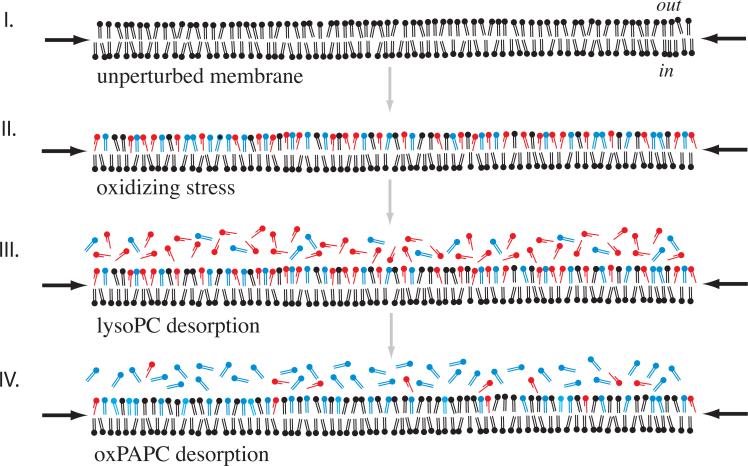Fig. 10.
Differential release model of oxidized phospholipids from the outer leaflet of the lipid bilayer. (I) represents the unperturbed lipid bilayer modeled using a monolayer held at 30 mN/m (indicated by black arrows); such a monolayer undergoes a lipid packing density, and thus hydrophobic free energy density, that is equivalent to that of a bilayer (see main text). PAPC, which is what oxPAPC and lysoPC are believed to originate from, exists in the outer membrane leaflet. When exposed to oxidizing stress, oxidized lipids are generated. In (II) this is represented by lysoPC in red, the oxPAPC species in blue, with black being un-oxidized components of the bilayer. Given lysoPC's low hydrophobicity it desorbs rapidly from the membrane (III) generating a oxPAPC enriched state (IV), which returns to the initial membrane more slowly as oxPAPC desorbs. (For interpretation of the references to color in this figure legend, the reader is referred to the web version of the article.)

